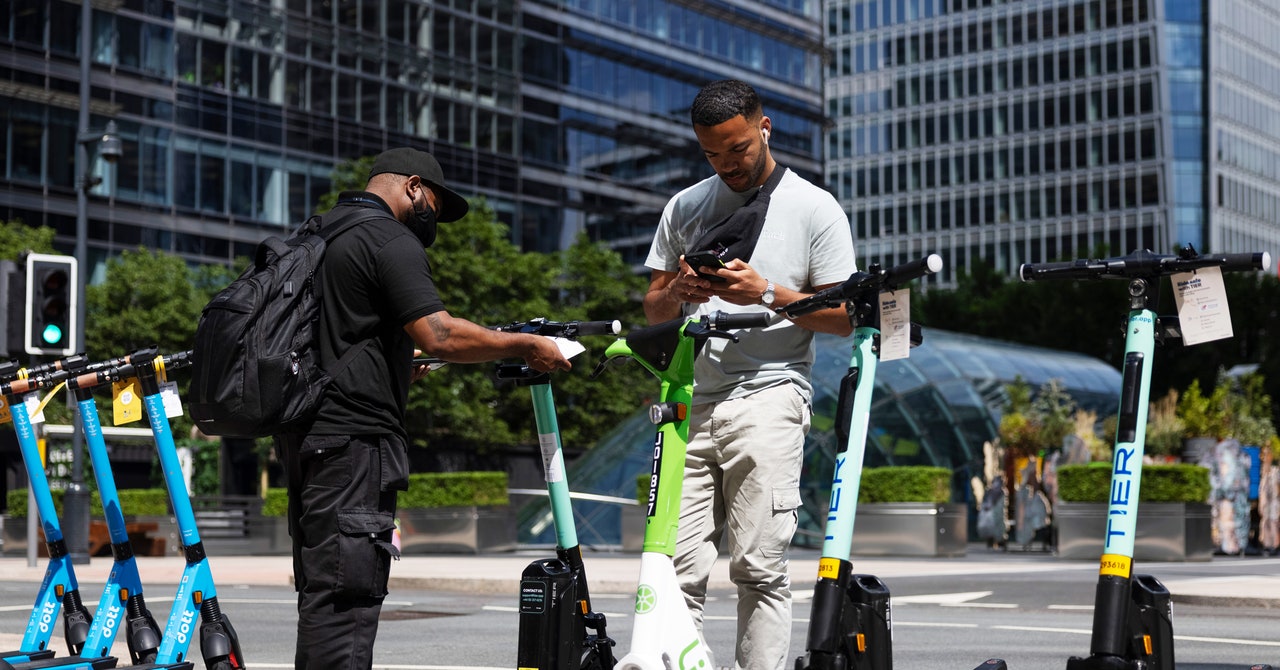like a sultry As spring evening settled in western Paris, I had to cross the city to my apartment, about two miles away. The streets were crowded, so I was hesitant to get a taxi, and I didn’t feel like taking the metro because it was hot and the station was far away. So I rented a battery powered scooter that was available on the street and cut through traffic right up to my front door. The trip was fun, not to mention affordable and fast. It was also green, I assumed: Escooters don’t emit fumes, so they had to, right?
The rollout of huge numbers of shared e-scooters is built on this premise: instead of a gas-guzzling car, take an electric two-wheeler. Save the planet and time. Lime, which operates around the world, but especially in Europe and North America, aims to “build a future where transport is shared, affordable and carbon-free”. Another operator, Bird, suggests that users can “cut down on CO2— one ride at a time.”
But research shows that rental escooters have not really reduced CO2 emissions in cities. It’s complicated, says Juan Matute, deputy director of the Institute of Transportation Studies at the University of California, Los Angeles. There are plenty of circumstances where escooter programs can be green, he says, but it depends on how and where they work.
Love them or loathe them, rental escooters have overrun the world’s largest cities. People in the US made an estimated 86 million rides on shared e-scooters in 2019, before nearly all modes of transportation declined due to the pandemic. Even in Covid-hit 2020 — the last year for which there is data — people in the US, Canada and Mexico managed to make more than 25 million trips. You can rent e-scooters in hundreds of cities on both sides of the Atlantic, including Seattle, London, Rome and Kiev. They also descend to New York, and increasingly to cities in Asia.
The first of these programs was launched in September 2017 by the micromobility company Bird in Santa Monica, California. Others soon followed and were an instant success. But as the market expanded, there has been little rigorous analysis of the environmental impact of these rental programs. E-scooters were believed to have a negligible carbon footprint, allowing companies to raise huge sums of investment. As of May 2019, there were 14 escooter companies operating in 97 US cities.
To assess the environmental impact of these programs, you need to consider the emissions of e-scooters throughout their life cycle: the production of the materials and components used in each scooter; the productionproces; shipping the scooters to wherever they will be used; the collection, charging and redistribution of the scooters; and its removal. Once you do, it can paint a bleak picture.
According to a 2019 study conducted in the US state of North Carolina, shared e-scooters produce 202 grams of CO2 per passenger mile over their entire life cycle – more than an electric moped (119 grams), electric bicycle (40 grams), bicycle (8 grams) and even a diesel bus (82 grams), assuming it has a high passenger volume. Although the study found that e-scooters produce lower CO2 emissions than a shared car (415 grams), only 34 percent of the e-scooter rides analyzed replace a trip that would have been made in one go.
By contrast, nearly half of the trips would have been a bike ride or a walk, and 11 percent would have been a bus ride. 7 percent of rides wouldn’t have happened at all without e-scooters. Because the extra emissions from the scooters outweighed the profits made from car trips that were not made, the study concluded that e-scooter rental programs contribute to the total transport emissions.
These findings were compounded by a 2020 study in Paris, which concluded that the city’s shared e-scooters added 13,000 tons of additional greenhouse gases to the city’s carbon footprint in a year, equivalent to the total annual emissions of a little city. Again, e-scooter rides were often replacements for trips made with lower-emission modes of transport.
Earlier this year, a study by Daniel Reck and Kay Axhausen of the Swiss Federal Institute of Technology in Zurich concluded that a shared e-scooter produces an additional 51 grams of CO2 on average.2 per kilometer than the means of transport it replaces. “The bottom line is that shared e-scooters are currently harming the climate,” Reck said in an interview with the German newspaper. Die Zeit†
Much of this is due to poor design. During the early days of e-scooter rental, the industry implemented slightly modified versions of models sold directly to consumers. Manufactured in China by companies like Xiaomi and Segway-Ninebot, they were unprepared for the rigors of the sharing economy. The battery case was often not even waterproof, so wetter places would ignite batteries, and there was no protection against vandalism and theft. Where scooters were new, they were often destroyed. “The first round vehicles weren’t really designed for this industry,” said Scott Rushforth, Bird’s chief vehicle officer.

